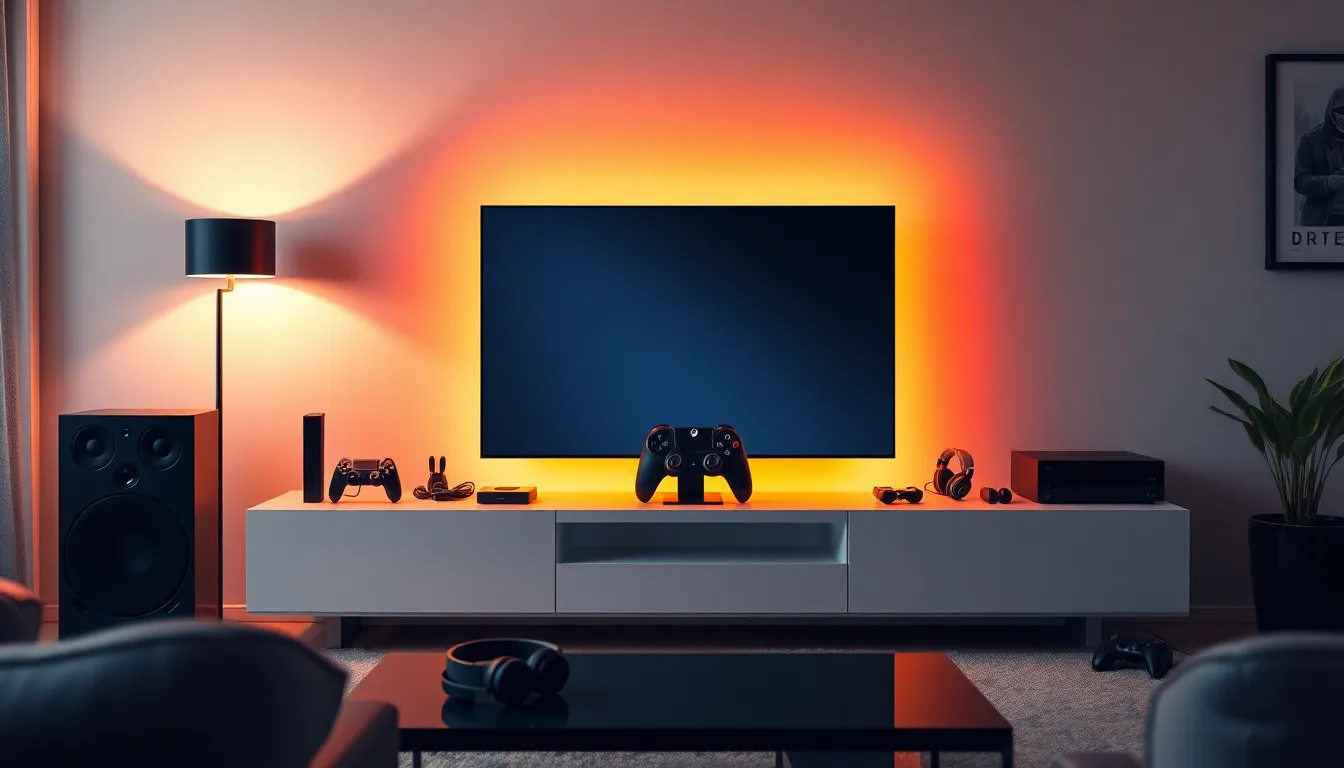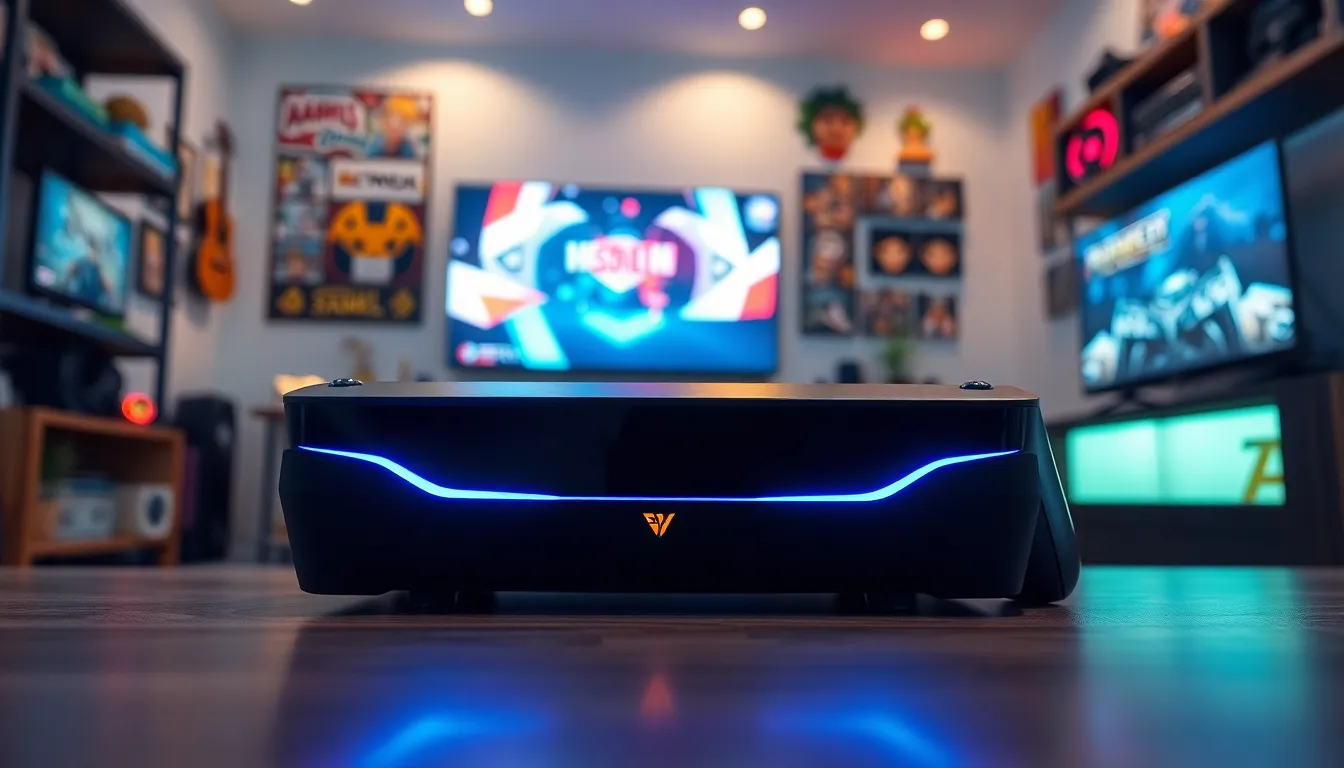Physical Address
304 North Cardinal St.
Dorchester Center, MA 02124
Physical Address
304 North Cardinal St.
Dorchester Center, MA 02124

When it comes to gaming, some folks are willing to shell out serious cash for the ultimate experience. Enter the world of the most expensive gaming consoles, where price tags soar higher than a Mario jump on a power-up. These consoles aren’t just about playing games; they’re status symbols that scream, “I’ve made it!”
Imagine unboxing a console that costs more than your first car—it’s a thrill like no other. From exclusive features to limited editions, these high-end gadgets promise not just entertainment but also a bragging rights trophy for your gaming buddies. So grab your wallet and get ready to explore the jaw-dropping world of luxury gaming consoles that redefine what it means to play in style.
Gaming consoles serve as primary platforms for video games, providing unique entertainment experiences. Several popular brands dominate the market, including Sony, Microsoft, and Nintendo. Each brand offers distinctive features that cater to different types of gamers, from casual to hardcore players.
The PlayStation lineup features innovative technology and exclusive titles, while Xbox provides powerful hardware and extensive online services. Nintendo appeals to family-oriented audiences through its unique gameplay and iconic characters.
Pricing for these consoles varies greatly. Standard models often range from $300 to $500, but limited editions and high-end versions may reach prices of $1,000 or more. Gamers target these luxury consoles for their advanced graphics, faster loading times, and immersive experiences.
In addition to performance, aesthetics play a crucial role. Gamers seek consoles that not only function well but also embody style and modern design. Collectible versions often attract attention due to their rarity and exclusivity, increasing their market value.
Online services enhance gaming experiences significantly, offering access to multiplayer modes, streaming, and downloadable content. Accordingly, subscription services bundled with consoles provide excellent value, allowing gamers to enjoy a broader range of titles.
Ultimately, gaming consoles function as much more than just devices for playing games. They reflect the lifestyle and preferences of their owners, making them critical components of modern gaming culture.

Several elements impact the pricing of gaming consoles, shaping how much enthusiasts are willing to invest.
Brand reputation plays a significant role in pricing. Well-known brands like Sony, Microsoft, and Nintendo command higher prices due to established trust and loyal customer bases. Consumers often associate these brands with quality, leading them to pay premium amounts for consoles. Limited editions or special releases generate excitement and enhance perceived value, resulting in prices exceeding standard models. Companies that innovate consistently also tend to create a sense of exclusivity. This exclusivity encourages buyers to spend more for a console that represents their gaming commitment.
Technological advances significantly affect gaming console prices. Cutting-edge features such as advanced graphics processing and immersive virtual reality capabilities attract gamers willing to pay extra for exceptional performance. Next-gen consoles often include upgrades in hardware like faster CPUs and larger storage capacities, enhancing the overall user experience. Manufacturers frequently incorporate online capabilities and exclusive content, which can drive prices higher. Additionally, the development of 8K resolution gaming and ray tracing further uplifts market value, as these innovations set consoles apart from their predecessors.
The market features consoles that command high prices, appealing to gamers seeking luxury and advanced technology. Several models stand out due to their exceptional specifications and unique features.
Top-tier gaming consoles boast cutting-edge technology, including powerful CPUs and GPUs that enhance gameplay. Superior graphics capabilities allow for stunning visuals and fluid motions. Some consoles support 8K resolution, ensuring an immersive experience. Advanced audio systems create realistic soundscapes, boosting the overall engagement of gaming titles. Customizable designs elevate aesthetics, appealing to collectors and enthusiasts alike. Many consoles feature exclusive games developed specifically for high-performance systems, providing gamers with unique content not available on standard models. Storage options often include substantial SSDs, allowing for faster load times and improved performance.

Pricing varies significantly among gaming consoles, especially between standard and limited editions. Standard consoles typically range from $300 to $500. Exclusive and high-end models often exceed $1,000, driven by their unique features and limited availability. For instance, the PlayStation 5 Digital Edition costs around $399, while the custom edition can surpass $1,500. The Xbox Series X, priced at about $499, offers premium features but competes closely with higher-priced models. Additionally, pricing for special collaborations or themed editions can reach upwards of $1,800, reflecting the collector’s market. Overall, the pricing structure illustrates how brand reputation and technological advancements directly influence the cost.
The evolution of gaming console prices reveals significant trends and milestones. Notable examples from the past shed light on this journey.
Early systems like the Atari 2600 launched in 1977 for $199. This marked one of the first mainstream gaming consoles. Nintendo’s Super Nintendo Entertainment System released in 1990, retailed at $199. Key innovations, like 16-bit graphics, fueled its popularity. The Sony PlayStation, introduced in 1994 at $299, revolutionized the market with 3D capabilities. In 2000, the PlayStation 2 debuted priced at $299, becoming the best-selling console ever. The Microsoft Xbox, released in 2001 for $299, introduced online gaming to a broader audience. Each of these consoles set pricing benchmarks, influencing future generations of gaming devices significantly.
Over the years, gaming console prices have shown fluctuation influenced by various factors. Consumer demand and technological advancement drive price changes. Standard models mostly ranged between $300 and $500. Limited editions, however, could exceed $1,000, appealing to enthusiasts. Released in 2013, the PlayStation 4 started at $399. Comparatively, the Xbox One launched at $499 with added features. The emergence of 8K gaming sparked renewed interest, causing some models to break the $1,000 threshold. Recent upscale models and high-performance custom editions even reach prices above $1,800. Trends illustrate an increasing willingness among gamers to invest for premium features, enhancing the overall gaming experience.
The world of expensive gaming consoles reveals a fascinating intersection of technology and luxury. For many gamers investing in high-end models isn’t just about performance; it’s about making a statement and embracing a lifestyle. These consoles symbolize status and sophistication while offering unparalleled gaming experiences that standard models simply can’t match.
As technology continues to evolve and new innovations emerge, the allure of these elite devices will likely grow. Gamers are increasingly drawn to the unique features and designs that set these consoles apart. With the gaming landscape ever-changing, the demand for premium consoles will remain strong, ensuring that the market for the most expensive gaming devices continues to thrive.